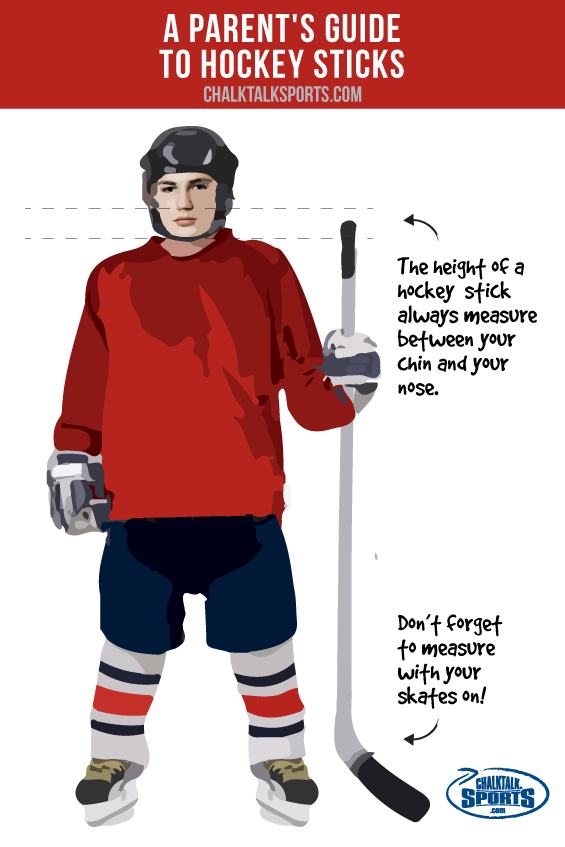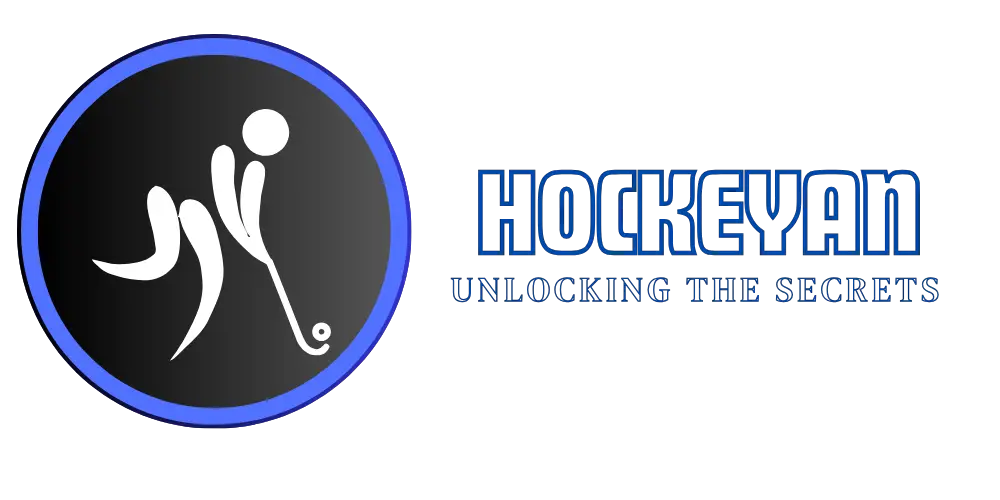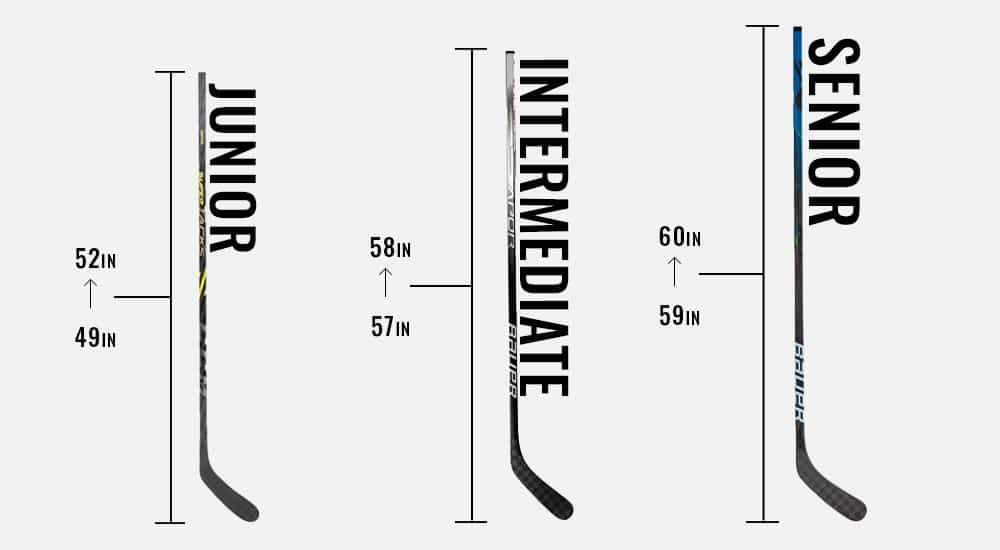Choosing the right hockey stick size is crucial for performance. A poorly fitted stick can hinder your game.
To find the perfect hockey stick, you need to measure accurately. The right stick ensures you have control, power, and precision on the ice. This guide will help you understand the essential steps in measuring for a hockey stick. Whether you’re a beginner or an experienced player, getting the right measurements can enhance your skills.
We will cover everything from stick length to flex, and why each aspect matters. By the end, you’ll know how to select a stick that fits you perfectly, so you can play your best game.

Credit: www.goneforarun.com
Choosing The Right Stick Length
Choosing the right hockey stick length is crucial for performance. A stick that’s too long or too short can affect your game. It influences your control, reach, and overall comfort.
Height Considerations
Your height is the first factor to consider. Stand in your skates and hold the stick vertically. The stick should reach your nose. Without skates, it should reach your chin. This guideline helps ensure the stick fits your height.
Player Position Impact
Your position on the ice also matters. Forwards often prefer shorter sticks. This allows for better control and stickhandling. Defensemen might choose longer sticks. It gives them better reach to block shots and passes.

Credit: www.prostockhockey.com
Determining The Flex
Choosing the right hockey stick involves many factors. One key factor is the flex. Flex impacts your shot’s power and accuracy. Understanding flex will help you perform better on the ice.
What Is Flex?
Flex refers to how much a hockey stick bends. It’s measured by the amount of force needed to bend the stick one inch. A stick with higher flex rating is stiffer. A lower flex rating means the stick is more flexible.
Flex Ratings And Their Uses
Flex ratings are numbers that indicate the stick’s stiffness. Common flex ratings range from 30 to 120. Youth players often use sticks with a flex rating of 30 to 50. Junior players might use 50 to 70. Senior players usually prefer 85 to 100 or more.
Choosing the right flex depends on your strength and playing style. Stronger players often prefer stiffer sticks. They provide more power for slap shots and long passes. Lighter players might choose more flexible sticks. They allow for quicker wrist shots and better puck handling.
Selecting The Blade Curve
Choosing the right blade curve for your hockey stick is crucial. The curve affects your puck control, shooting, and passing. To find the perfect blade curve, you need to understand the different types and how they match your play style.
Curve Types
Blade curves come in various types. The most common are the toe curve, mid curve, and heel curve. Each type offers unique benefits.
The toe curve is great for quick wrist shots. It helps in tight spaces and close to the net. The mid curve offers a balance of control and power. It’s versatile for shooting and passing. The heel curve provides powerful slap shots. It gives more control for long passes.
Matching Curve To Play Style
Your play style influences which blade curve suits you best. If you like quick shots, the toe curve is a good choice. It helps in fast puck handling and tight maneuvers.
If you play a balanced game, the mid curve might be ideal. It offers control and power for different situations. For players focusing on strong slap shots, the heel curve is best. It provides strength and precision for long-distance plays.
Consider your position and how you play. Select a blade curve that enhances your strengths. Experiment with different curves to find what feels right.

Credit: hockeyrepairshop.com
Grip And Shaft Types
Choosing the right hockey stick is crucial for your performance on the ice. Understanding the grip and shaft types can significantly improve your control and comfort. This section will explore the different grip options and shaft shapes available for hockey sticks.
Grip Options
The grip on a hockey stick affects how well you can control the stick. Here are some common grip options:
- Grip Coating: This type of grip features a tacky surface. It helps your hands stay in place.
- Smooth Finish: This option has a non-tacky surface. It allows for easy hand movement up and down the shaft.
- Tape Grip: Players often add tape to the shaft. This provides a customizable grip feel.
Choosing the right grip can make a big difference in your game.
Shaft Shapes
The shape of the shaft can impact your stickhandling and shooting. Here are some common shaft shapes:
| Shape | Description |
|---|---|
| Round | Offers a comfortable grip. Good for players with smaller hands. |
| Square | Provides a solid feel. Ideal for players who prefer a sturdy grip. |
| Concave | Has slight inward curves on the sides. Enhances control during stickhandling. |
Each shape offers unique benefits. Your choice depends on personal preference and play style.
Experiment with different options to find what works best for you. Remember, the right grip and shaft shape can elevate your game. Choose wisely!
Testing The Stick
Testing the stick is a crucial step in finding the perfect hockey stick. You need to ensure the stick is the right length, flex, and blade pattern. This process helps you feel comfortable and improves your performance on the ice. Follow these steps to test your hockey stick effectively.
On-ice Testing
Bring your stick to an ice rink. Practice your usual moves. Skate, shoot, and pass the puck. Focus on how the stick feels in your hands. Check if the stick’s length suits your height and playing style. Pay attention to the stick’s flex. Make sure it offers enough power without being too stiff. The blade pattern should help you control the puck easily. Spend enough time to get a real sense of how the stick performs.
Adjustments And Final Decisions
After on-ice testing, consider any adjustments needed. If the stick feels too long, cut it down a bit. If the flex is too stiff, try a stick with a lower flex rating. Adjust the blade curve if it doesn’t suit your play. These small changes can make a big difference. Once you make adjustments, test the stick again. Ensure it feels right in all aspects. Finally, make your decision based on how comfortable and effective the stick feels. Remember, the right stick can enhance your game significantly.
Frequently Asked Questions
How Do You Measure A Hockey Stick For A Child?
Stand the stick on its toe. It should reach between their chin and nose.
What Is The Correct Hockey Stick Length For Adults?
Stand the stick on its toe. It should reach up to your chin, without skates.
Why Is Stick Length Important In Hockey?
Proper stick length helps with control, passing, and shooting accuracy.
Can You Cut A Hockey Stick To The Right Length?
Yes, you can cut the stick to adjust it to your height.
How To Measure Hockey Stick Length With Skates On?
Stand on your skates. The stick should reach your chin or nose.
Does Player Position Affect Stick Length?
Yes, defensemen may prefer longer sticks for reach; forwards might like shorter sticks for control.
What Tools Do I Need To Cut A Hockey Stick?
You need a saw and a measuring tape to cut a hockey stick.
How To Measure Hockey Stick Length Without A Tape Measure?
Use your body as a guide; the stick should reach your chin or nose.
Do Different Brands Have Different Stick Lengths?
Most brands have similar lengths, but always check the specific brand’s size chart.
Conclusion
Choosing the right hockey stick length is crucial. It impacts your play. Measure your height and skates for accuracy. Use a measuring tape. Stand straight for the best results. Ensure the stick reaches your chin or nose. You now know how to measure for a hockey stick.
Practice these steps to find your ideal stick. Enjoy better control and performance on the ice. Happy playing!




